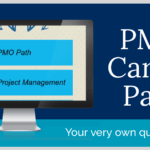New talent, waning targets, or fresh objects are all perfect reasons to restructure your project management office (PMO). There’s more than one way to skin a rabbit, so the saying goes, so you should consider your options for the new structure as you reorganise your PMO.
Choosing the right structure to support the projects within the business will make or break a PMO. There are lots of ways to can go about structuring your office – each one will be different depending on what your organisation needs.
To help you decide how to reorganise your PMO when the time comes, we’ll be answering:
- How do you choose a PMO style?
- Where should the PMO sit within the business?
- What’s the best geographic location for your office?
To give you some ideas about beginning to plan your overhaul.
What’s the right style for my PMO?
How your PMO supports the business is a fundamental question you need to ask of your office. There are a few different models of PMO and what functions they can offer. Here’s a rundown of the three most common that you can consider pivoting to:
- Business-focussed, or enterprise PMOs can pitch and even commission projects. Their focus is on high-level strategy and delivering returns on investments.
- Supportive PMOs are there to support projects with planning, process maps, and project resources. They act as a centre of project management excellence.
- Traditional, or process PMOs offer technical oversight and ensure projects adhere to targets. They monitor KPIs and produce data to lead business decisions.
You need to look at the projects your PMO runs, what direction the business is heading in terms of project needs, and choose a model that fits if this element of your PMO needs restructuring.
Where is the right place in the business for a PMO?
There are lots of reasons you might want to relocate your PMO as you reorganise it. Whether your PMO restructuring is down to a merger or a shift in business strategy, assessing where your office belongs and who it reports to can make a huge difference.
Pushing your PMO up to be directly overseen by an executive-level leader will give you visibility and a direct way to demonstrate the value it adds. You also get to derive some authority in the organisation when senior management have an interest in your success.
The personality of your C-suite sponsor can be a major influence on your office so try and find one that fits. Their role will also be a deciding factor, for example:
- Working with the CEO will give you high visibility and accountability; you’ll be able to get things done and should enjoy a good deal of autonomy and power.
- Siting your office with the CTO is ideal for a PMO with tech-led projects like rolling out software or producing tech products for clients.
- Basing your work under the COO works for an office that is task-driven and produces data and measurable results.
How can I improve the geography of my PMO?
The size of the company will often dictate what your location choices are with your PMO. Reorganising your PMO to be in a different location can be costly, yet it can be money well-spent if it allows projects to move forward easier.
Relocating your PMO to the new HQ
Do you up your team and head to the newly acquired headquarters? Or stay in your current site and in your comfort zone? It’ll depend where most of your project work is and how closely you work with your line manager. Budget is also a big consideration – moving staff or recruiting a new team can be costly.
Reorganise your PMO to go remote
There are plenty of proven benefits to running a team remotely. Lower costs and better staff retention and productivity are big draws to modern businesses. Taking your team remote allows you to bring in international talent but does make networking and team building a more conscious effort.
Outsource your PMO functions
You can take some functions like team development, maintaining tools like SaaS packages, and report delivery outside of the business entirely. It’s an easy way to cut costs with no recruitment overheads and flexible volumes, but a disconnect between your team and the outsourced work can develop.
The take home
Once you’ve decided to reorganise your PMO, you need to make decisions about where it’s going to go. The options for new structures as you reorganise your PMO range from how you’ll run the office, to where it’ll fit in the organisation, and where you’ll physically work from.



